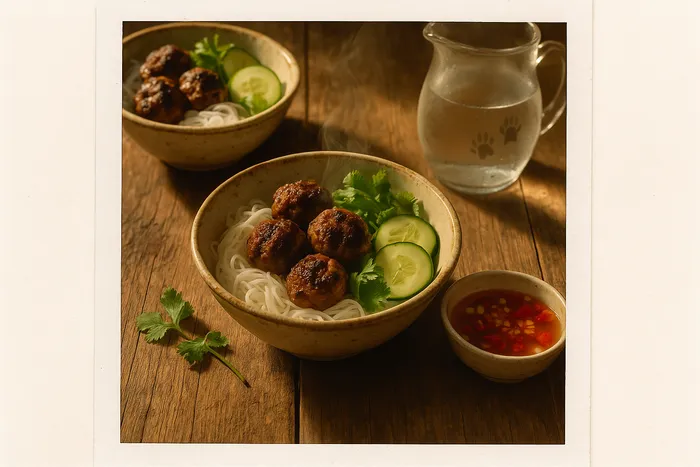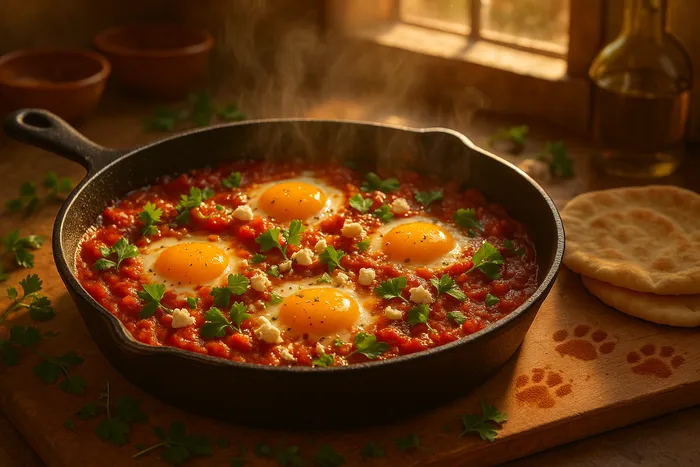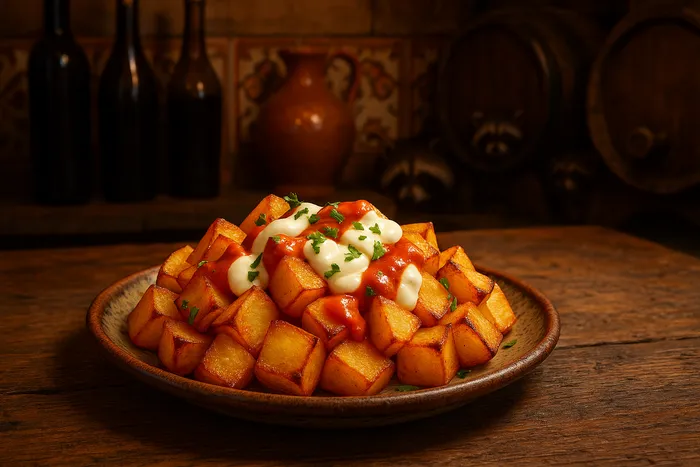
Real Lebanese tabbouleh flips expectations—it's a parsley salad with bulgur, not a bulgur salad with parsley. This isn't the heavy, grain-dominated version found in many Western interpretations. Authentic tabbouleh is blindingly green, shockingly fresh, and proves that when ingredients are perfect, the best thing you can do is get out of their way.
The secret lies in the proportions and the knife work. Parsley should be chopped finely but not minced to death, tomatoes should be seeded and diced small to prevent sogginess, and the bulgur should be just enough to provide texture without overwhelming the herbs.
Ingredients
🌿 3 large bunches flat-leaf parsley (about 4 cups chopped)
🌿 1/2 cup fresh mint leaves
🌾 1/4 cup fine bulgur wheat (#1 grade)
🍅 3 medium tomatoes, seeded and finely diced
🧅 4 scallions, white and green parts, finely chopped
🍋 1/3 cup fresh lemon juice (about 2-3 lemons)
🫒 1/3 cup extra-virgin olive oil
🧂 1 teaspoon salt, or to taste
🌶️ 1/4 teaspoon allspice (optional)
🥬 Romaine lettuce leaves for serving
Authentic Proportions Guide
Instructions
Prepare the bulgur first. Rinse fine bulgur in cold water until the water runs clear. Place in a bowl and cover with cold water by about 1 inch. Let soak for 20-30 minutes until tender but still with slight bite. Drain thoroughly in a fine-mesh strainer, pressing out excess water.
Master the parsley prep. Wash parsley thoroughly and dry completely—any water will make the tabbouleh soggy. Remove thick stems and chop the leaves finely but not to a pulp. You want small pieces that still have texture and structure.

Prep the mint. Stack mint leaves and roll them tightly, then slice into thin ribbons (chiffonade). Don't chop too finely—mint should provide bursts of flavor throughout the salad.
Handle tomatoes properly. Cut tomatoes in half and remove seeds and gel (save for another use). Dice the flesh into small, uniform pieces about 1/4 inch. Salt lightly and let drain in a colander for 10 minutes to remove excess moisture.
Chop scallions finely. Use both white and green parts, chopped to roughly the same size as the parsley for visual and textural consistency.
Combine thoughtfully. In a large bowl, combine the drained bulgur with chopped parsley, mint, drained tomatoes, and scallions. Toss gently to distribute evenly.
Dress with balance. In a small bowl, whisk together lemon juice, olive oil, salt, and allspice if using. Pour over the herb mixture and toss gently but thoroughly.
Let flavors meld. Allow tabbouleh to sit for 15-30 minutes before serving. This lets the bulgur absorb the dressing and the flavors marry.
Serve traditionally. Taste and adjust seasoning—you might need more lemon juice for brightness or salt for depth. Serve with crisp romaine lettuce leaves as scoops.
Technique Notes
The parsley-to-bulgur ratio is crucial—parsley should dominate. If you can see more bulgur than herbs, you've used too much grain.
Completely dry parsley is essential. Wet herbs will make the salad soggy and dilute the dressing.
Fresh lemon juice makes a significant difference. Bottled juice lacks the brightness that makes tabbouleh sing.
Ingredient Quality
Use flat-leaf parsley, not curly. Flat-leaf has better flavor and texture for this application.
The bulgur should be fine grade (#1)—coarser grades won't soften properly with just soaking.
Tomatoes should be ripe but firm enough to dice cleanly without falling apart.
Serving Tradition
In Lebanon, tabbouleh is often served as part of a mezze spread alongside Baba Ganoush, Lebanese Grilled Halloumi, and other small plates.
The traditional way to eat tabbouleh is with romaine lettuce leaves as scoops, not with a fork. This adds extra crunch and keeps the meal light.
Storage Notes
Tabbouleh is best eaten within a few hours of making. The herbs will wilt and the salad will become soggy if stored too long.
If you must make it ahead, prepare all components separately and combine just before serving.
Remix Ideas
Turkish variation: Add pomegranate seeds for color and tartness.
Syrian style: Include a pinch of cinnamon and use more tomatoes.
Quinoa tabbouleh: Replace bulgur with cooked quinoa for gluten-free version.
Winter herbs: Try with dill and cilantro when fresh mint isn't available.
Cucumber addition: Add finely diced cucumber for extra crunch and cooling effect.
Perfect tabbouleh should taste like you're eating a garden—fresh, bright, and green enough to make you forget that salads can be boring. It's Lebanese cuisine at its most essential: simple ingredients treated with respect, combined with perfect proportions, and served with the understanding that sometimes the most nutritious foods are also the most delicious. Serve it alongside other Lebanese favorites for a mezze spread that celebrates the country's mastery of fresh, herb-driven cuisine.









